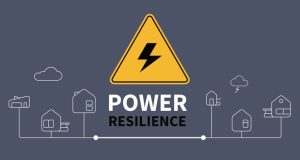Mike Wood, Product & Technology Director at Constructionline explains the ways in which health and safety standards can be better managed throughout the supply chain
Many facilities managers – particularly those working on large building and construction projects – will appreciate the challenges that subcontracting can present. Ensuring health and safety compliance throughout the supply chain is just one of them.
Health and safety issues – and guidance surrounding the best way to avoid incidents – change regularly. It can be difficult enough to ensure that your own workforce is safe, but when it comes to subcontractors – who may have to comply with different policies and processes on every project they work on – it can become incredibly complex.
Marry this with the increasing pressure of saving both time and money on site and the temptation can be to look for ways to cut costs; the latest statistics for construction output from the IHS Markit / CIPS UK Construction Purchasing Managers’ Index(1) don’t make for easy reading, showing Brexit and material shortages are having a real impact on confidence.
Health and safety compliance – both for your direct and subcontracted workforce – should be strictly protected, however. Not managing health and safety diligently throughout the supply chain can have a hugely detrimental impact on a business – not just in terms of bottom line, but in terms of reputation management.
Any reputable business will work hard to ensure that their safety standards are high, and that the health and wellbeing of their staff is protected. But the reality is that accidents and illnesses still occur in the workplace every day – according to the HSE, in 2016/17, 137 people were killed at work, while over 609,000 workers suffered non-fatal injuries as a result of work activity.
Therefore, it is crucial to ensure that everyone is informed when it comes to health and safety best practice and follow the regulations set out by construction standard CDM 2015(2), so that subcontractors are just as well protected as your own employees. How can organisations provide a safe, healthy workplace for everyone that is working on their projects – including subcontractors? And, how can they ensure that the suppliers they subcontract are fully verified and have the most relevant and recent health and safety accreditations?
Fundamentally, it is your responsibility to provide a safe, healthy workplace for everyone that’s working on your project. There are several ways you can ensure that everyone understands, and are equipped to meet your high standards for health and safety:
➤ Review your existing processes
When it comes to health and safety, legislation is constantly changing and workers are facing new issues all the time. That’s why it’s a good idea to review your health and safety policy and processes regularly, to ensure that they are fit to meet today’s workplace challenges.
The HSE provides detailed contractor guidance on the steps to follow when planning and executing any project – particularly a construction project, which is
a high-risk sector. Contractors must be fully aware of their obligations to ensure they operate compliantly.(3)
It’s also wise to seek external support, as health and safety experts may pick up on areas for improvement that you might otherwise miss. Gaining Acclaim accreditation(4) is a great way to get external reassurance around a company’s processes, as one of their qualified assessors carries out a review to ensure that their health and safety documentation is in place as part of the accreditation process.
➤ Set your standards from the start
We know that when you’re looking for a suitable supplier, there are many elements that you need to take into consideration, from their previous experience to their environmental policy. You should also check their health and safety policies and track record thoroughly, to ensure that their standards are aligned with your own.
For example, Safety Schemes in Procurement (SSIP)(5) is the de facto standard for the construction sector and contains a standard set of criteria to which suppliers and contractors must adhere. Many of our members work with Acclaim to review supplier policies and working practices as part of the SSIP standard. Acclaim is accredited to award ‘Deemed to Satisfy’ certificates, demonstrating that suppliers are qualified and ready to work in the sector.
Because safety is so important to our buyers, we include verification of health and safety policies and practices for all Gold and Platinum members, making it quick and easy for buyers to identify them on the Constructionline platform. This helps reduce the time spent in prequalifying suppliers, speeding up procurement processes.
➤ Don’t let standards slip
When a project is underway, there can be so many different commercial, operational and time pressures on your team, that health and safety can slip down their list of priorities. That’s why it’s a good idea to implement a health and safety management system on each project you undertake – and it doesn’t have to be complex.
A simple ‘plan, do, check, act’ system can make a real difference to health and safety on-site. To follow this system, you need to plan what controls are needed to maintain health and safety, do what it says in the plan, periodically check whether your controls are effective, and act if checks reveal your current processes aren’t working. You should also build health and safety milestones into your overall project plan, which involves stopping and reviewing how well health and safety standards are being observed at critical phases of your project.
It can be a difficult and time-consuming process to ensure that your health and safety procedures are in line with best practice, and are observed by everyone working on your projects – both direct employees and subcontractors. However, not doing so in line with established guidance has the potential to have a far wider financial and reputational impact on your business, and in today’s uncertain world, it really isn’t a risk worth taking.





